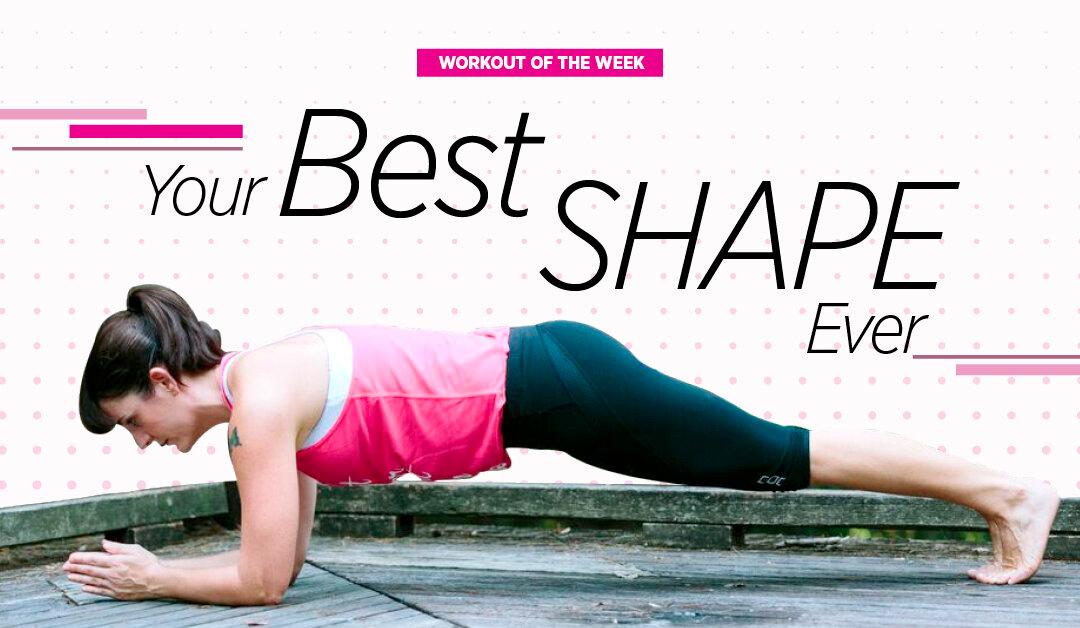Pilates is a restorative type of exercise. The more you do it, the better your body will feel and operate. By practicing Pilates movements on a regular basis, you will feel strong, mobile, and calm.
You can do this workout as many times as you can fit in a week. Unlike other types of exercise, you don’t need to take rest days from Pilates.
It is also important to emphasize quality over quantity. Instead of doing a high number of repetitions, put high priority on controlled, slow movements.
Toe Taps


This movement specifically targets your lower abdominals. It will activate your deep core muscle, known as transversus abdominis. Moving slowly will make the exercise more challenging and effective.
1. Start by lying on the floor with knees bent, heels one foot away from your glutes and hands resting on your lower abdominal area to help activate your lower abs during the exercise.
2. Lift both legs, one leg at a time, into a 90-degree position. Just doing this static position correctly will engage your lower abdominals. Make sure you lift your pelvic floor muscles to create strength and stability in your lower-back region.
3. Inhale as you draw in your lower abs. Exhale as you tap one foot to the floor, holding the other one still at 90 degrees. Inhale as you return your foot and repeat on the opposite side.
Complete 10–12 taps.
Hinge from your hip, not from the knee. The further from your glutes you tap the foot, the harder the exercise will be. Don’t let your toes release to the floor heavily; instead, they should just lightly graze the floor.
If you feel any strain in your lower back, do the exercise with one leg on the floor. Also, keep your lower back imprinted into the floor for safety.
As your back strengthens, you may be able to do the exercise with a very small space between your lower back and the floor, which is referred to as neutral spine. However, imprinted spine is always a good option for beginners or anyone with lower-back issues.
Keep your shoulders, neck, and upper back relaxed.
Pendulum Legs

This exercise moves your spine through rotation, giving the muscles of your back a great stretch. Due to the rotation, it uses your oblique muscles to bring your legs to the center each time, so it is a fantastic way to tone your waist.
1. Lie on your back with your legs at 90 degrees and arms stretched out on the floor, making a T shape with your torso. Keep your palms facing up, so you don’t put pressure through your hands.
2. Take your legs to the right side using your abdominals to control the movement. Look in the opposite direction.
3. Repeat on the opposite side.
Complete 6 reps on each side. Stop in the middle each time when transitioning from side to side.
Keep your knees firmly squeezed together; this will activate your inner thighs. Also aim to keep your shins in line with one another and your shoulders connected to the floor.
Don’t be tempted to go all the way to the floor with your legs. The slower and more controlled your movement, the more effective it will be.
Ab Curl

This move will help to strengthen your rectus abdominis muscle and the obliques. As with the other exercises in this workout, focus on control and maintaining proper position throughout the movement.
1. Lie on your back with both feet flat on the floor.
2. Place your hands on either side of your head, elbows wide apart.
3. Crunch your upper body toward your lower body, squeezing the bottom of your ribs toward the top of your hips.
4. Keep your lower back in a neutral position throughout the entire exercise. This means your lower back and hips shouldn’t tilt back and forward as you do the crunch. The small space under your lower back will be there throughout the whole movement.
Repeat 12 times slowly.
Focus on a strong breath pattern to facilitate the safest and most efficient movement for your body. Exhale as you curl up. Inhale as you lower down.
Exhaling as you curl up will help eliminate tension in your neck and bring your body into a correct position.
Bridge

As we age, our spine starts to fuse together in different sections. This is a good move to prevent spinal fusion. It is particularly good for spinal mobility and also great for strengthening your buttocks and hamstrings.
1. Lie on your back with your feet about 12 inches from your hips.
2. Press your lower back into the floor and then continue to lift the rest of your spine away from the mat. Stop when your hips are lifted and in line with your shoulders and knees on a diagonal line.
3. Hold the position. Then roll the spine back down toward the floor.
Repeat 6 times.
To get the most out of this movement, perform it slowly. Imagine that your spine is a string of pearls and you are trying to lift one pearl at a time. Do the same when you lower.
Emma-Kate Stampton certifies Pilates instructors and is a certified personal trainer. With 10 years of industry experience, she is passionate about sharing the gift of health and well-being. She is based in Brisbane, Australia.
(All Photos by: Willis Lim / Model: Alana Ford)





